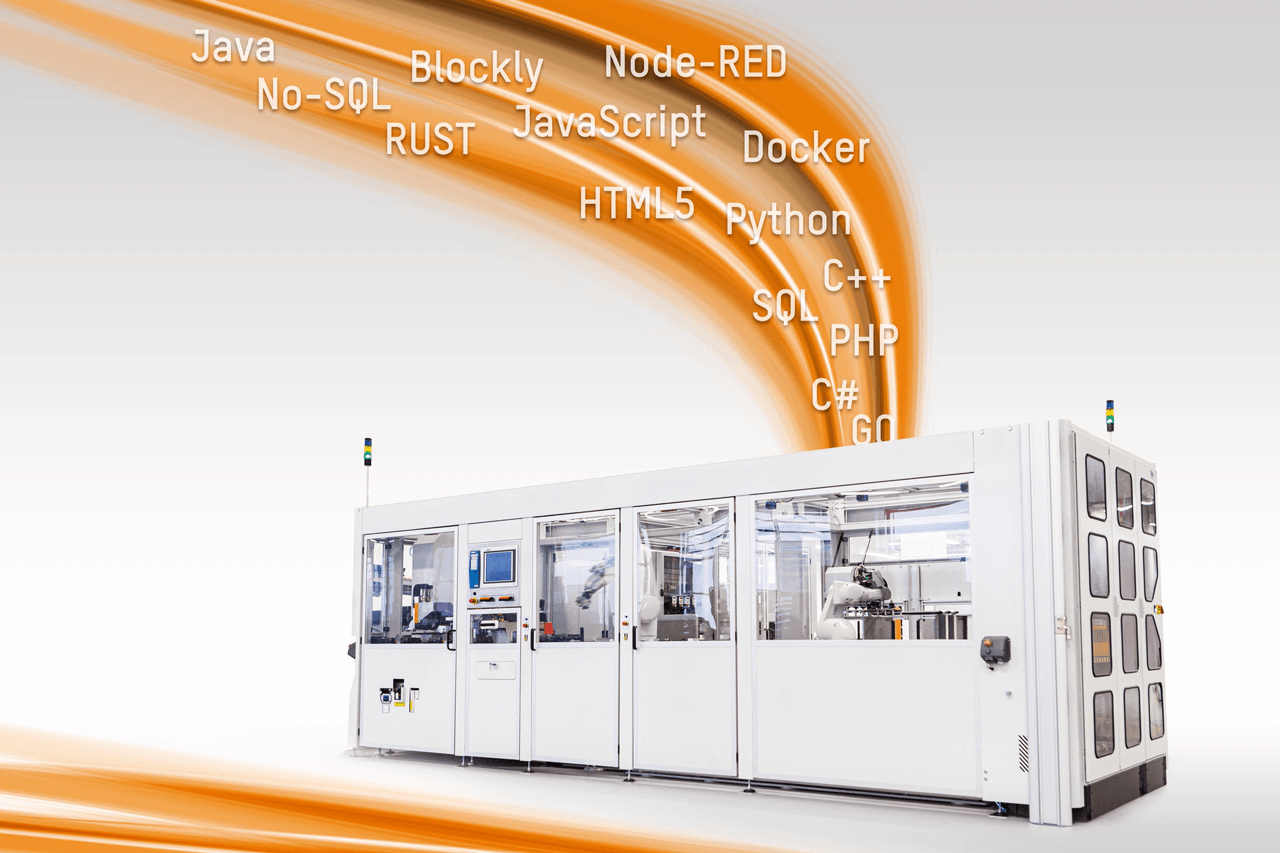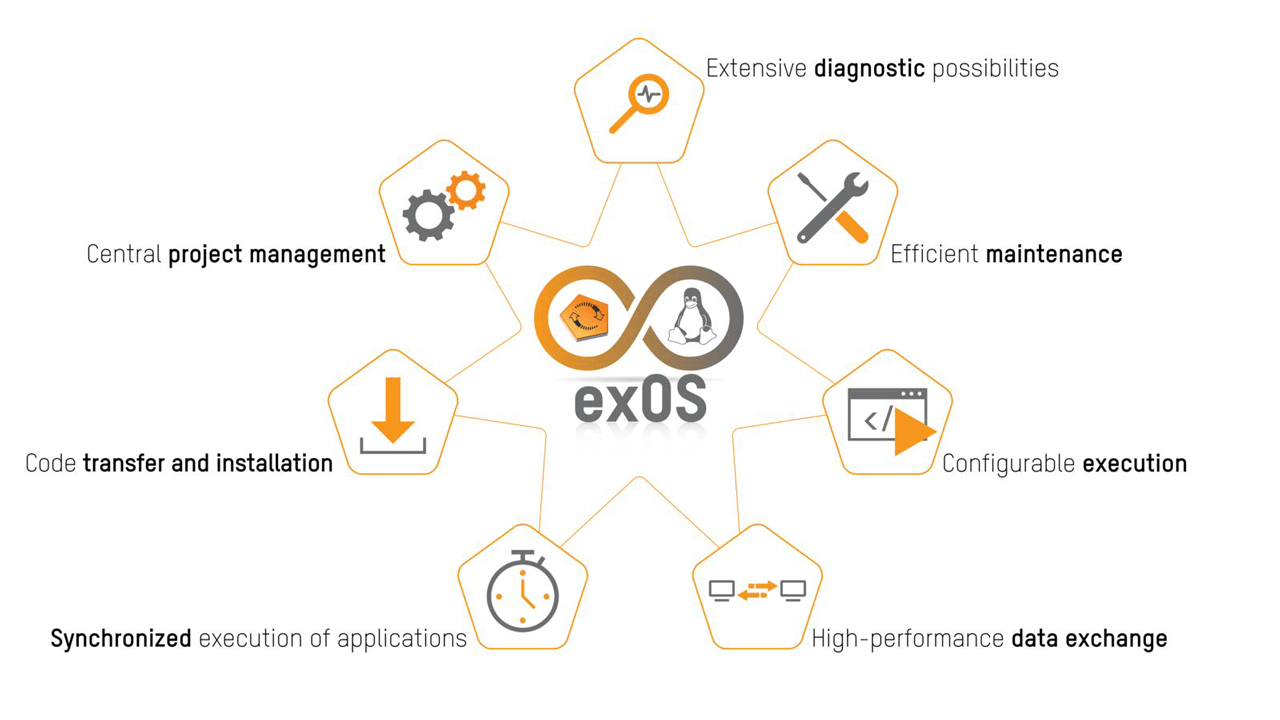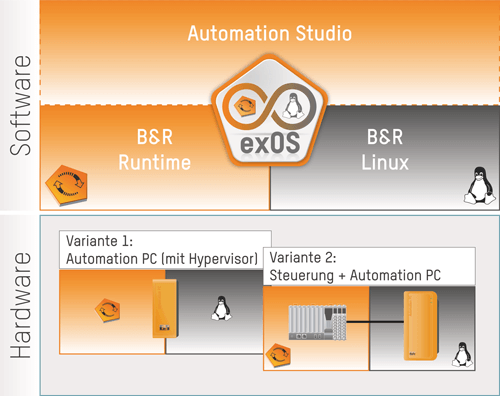TechnologyMarch 30, 2021
Software technology bridges gap between IT & OT

New exOS software offers machine builders a solution to the divide traditionally separating IT and OT. Using exOS gives Linux software developers an option to develop, compile and debug their code using their preferred environment, in coordination with B&R's Automation Runtime real-time operating system.
How do companies bring IT and OT together? It’s a question that must be answered by any company hoping to realize the visions of Industry 4.0. It’s a puzzle, so far, without a real solution. But new technology is now bridging the IT/OT divide, and offering machine builders access to the world’s largest software ecosystem.
To pull off today’s more advanced manufacturing solutions, machine builders need experts from the fields of IT and OT collaborating on interdisciplinary teams. That’s the key to leveraging the full potential of the Industrial IoT.
But it also becomes an arena of conflict between two different worlds. While OT experts are well-versed in machine design, PLC programming and commissioning, their IT colleagues are more at home using high-level programming languages like C++, Python or JavaScript and working with open-source software and Linux. Common ground can prove hard to find.
A team is only ever as good as its members. But picking the best and brightest from individual fields and gathering them around a table will only get you so far. You also need to give them the tools and opportunities to apply their craft toward a common solution. And all too often, there lies the rub.

The exOS technology gives control systems the ability to access and understand any Linux software.
Exploring new horizons
The challenge is to overcome the obstacles that stand in the way of harmonious, effective IT/OT collaboration. Traditionally, the two domains have existed more or less as parallel universes. “But with the rise of the Industrial IoT, the time has come to change that,” said Stefan Bina, B&R’s product manager for Industrial IoT network solutions. “It’s time to erase the lines between IT and OT.” Among the biggest obstacles is a lack of support in today’s control systems for the full bandwidth of high-level programming languages. As a prerequisite for true IT/OT connectivity, control systems must therefore be given the ability to access and understand Linux software.
This is exactly where new technology from B&R comes in – with its new enhanced crossover Operating System, or exOS for short. “With exOS, we bridge the divide that has traditionally separated IT and OT, and finally give machine builders a connection between the two worlds,” said Bina. “In doing so, we give them access to the world’s largest software ecosystem.”
exOS gives every Linux software developer the freedom to develop, compile and debug their code using their preferred environment. Then, the Linux application can be easily integrated into the control system with the help of exOS and used hand-in-hand with B&R’s real-time operating system, Automation Runtime.
“This offers the huge advantage that developers can work in their familiar environment, like Eclipse or Visual Studio, where they can make the best use of their knowledge and experience,” explained Bina.

Integrated functions simplify hybrid solutions combining machine control and Linux applications.
One central engineering tool
Developers simply import their completed Linux application into the B&R system as an exOS package. From that point on, they can use Automation Studio as a central engineering tool. Managing and debugging software solutions becomes simple and straightforward. No other tools are required. “What that means is that the developer creating the Linux software and the engineer commissioning the machine can each work in the environment they’re used to,” noted Bina, “because they have the exOS crossover solution bringing it all together seamlessly.”
Efficient maintenance

Machine builders can choose different types of exOS implementation: Automation Runtime and Linux.
In addition to streamlined development and commissioning, another hallmark of an intelligent machine is that any required maintenance can be performed quickly and easily. In the event of a malfunction, service technicians need to be able to locate the problem and contact the machine builder as quickly as possible. exOS also offers an array of diagnostics functions for installation and code execution. The B&R system provides the user with a complete log of all error messages from both the Linux application and the controller operating system. Hardware components are also easy to replace.
The machine is back up and running again in minutes without any reprogramming. “exOS makes maintenance much more efficient and significantly reduces downtime,” says Bina. Not only is it easy to replace hardware when necessary, any updates to the machine software can also be installed, for example via remote access.
Futureproof solution
B&R’s crossover solution offers numerous integrated functions that make it easier to implement hybrid solutions combining machine control and Linux applications. The integrated functions are executed symmetrically in Automation Runtime and Linux. “exOS uses technology and tools from the B&R system and integrates the Linux application into the B&R engineering environment. All the freedom of Linux remains,” said Bina.
Features include uniform project management for Linux and control applications in Automation Studio as welas automatic transfer of Linux applications from Automation Studio to the controller and the Linux environment. exOS also includes a user-friendly API for high-performance data exchange. The API ensures easy, buffered process data communication between the controller operating system and Linux, consistently in the millisecond range.
Scalable for any application
Machine builders can choose between two different types of exOS implementation. “One option is to run Automation Runtime and Linux on the same device, such as an Automation PC,” explained Bina.
This is useful if the Linux application is to be executed hand-in-hand with cyclic control applications, as is the case with automated guided vehicles (AGVs). Such systems are often based on the open-source robotics platform ROS. In ROS, dynamic path planning is executed in Linux, while motion control tasks are handled in Automation Runtime. With exOS, the two can be optimally synchronized in a hypervisor configuration and installed on one Automation PC.
Another way to implement an exOS automation solution is to combine an X20 PLC and an Automation PC. In this setup, the control system and Linux system are connected via an Ethernet interface. Having the two systems running on separate hardware maximizes utilization of the available processing capacity.
IT and OT hand-in-hand
As a flexible crossover solution, exOS breaks down longstanding barriers between IT and OT to create common ground for effective collaboration. “With this move, B&R opens up the world’s largest software ecosystem – where the best of both worlds can contribute to convergent, adaptive machine concepts,” says Bina. OEMs can fully leverage the know-how of their developers and engineers in both domains and implement innovative machine concepts for smart factories.
Carola Schwankner, editor, B&R


